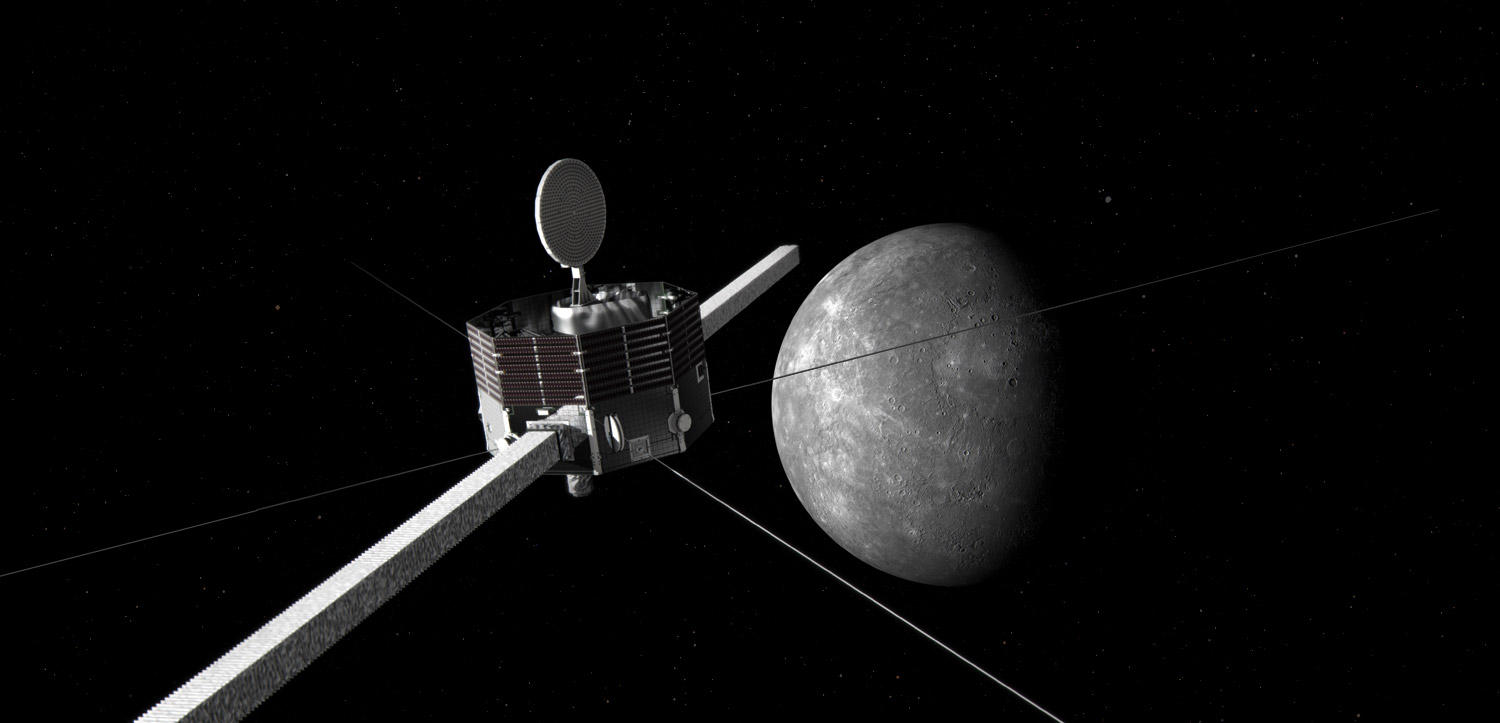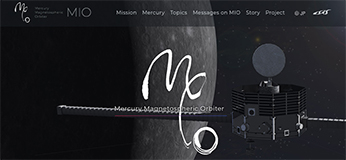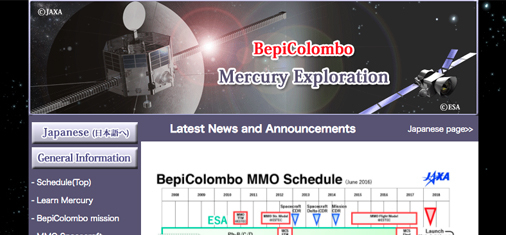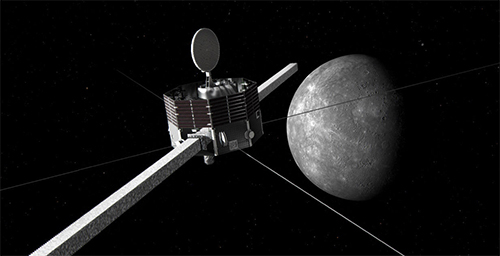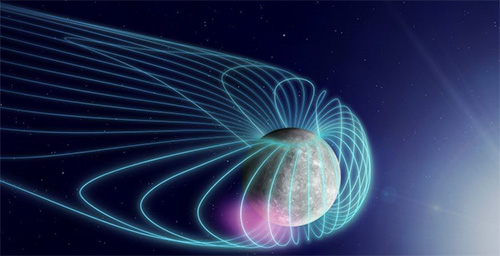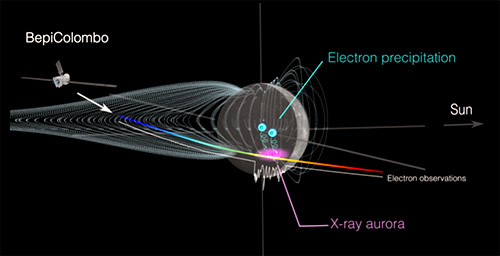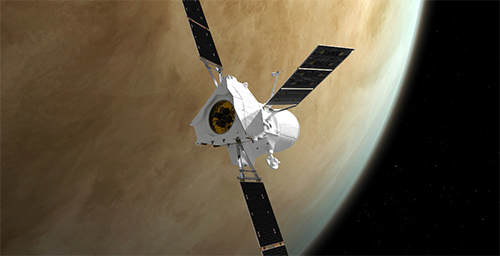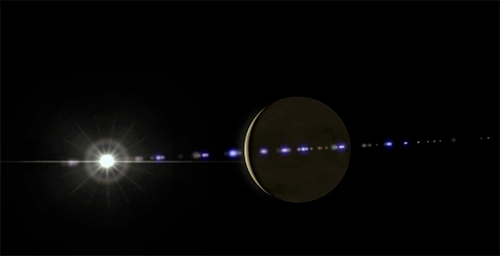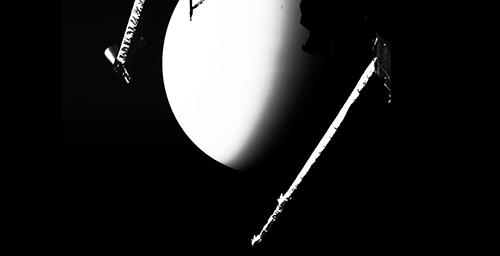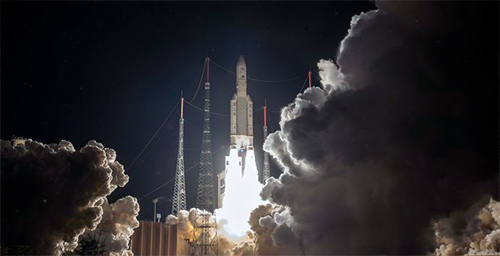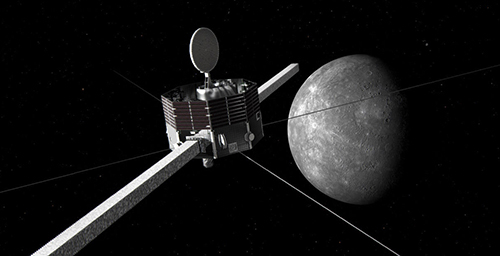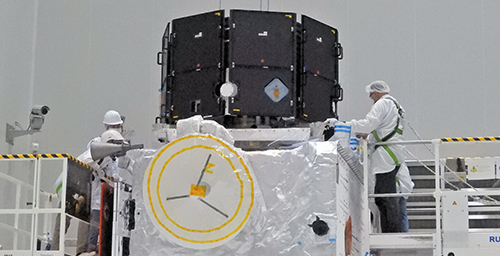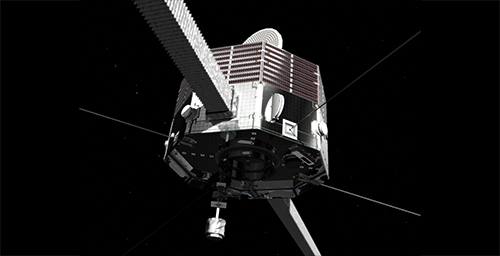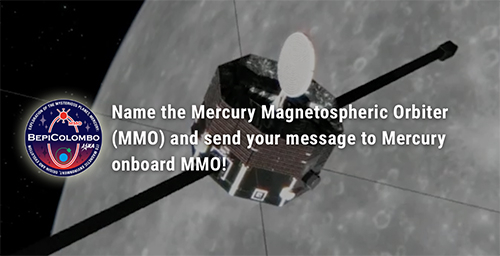This is a magnetosphere probe for Mercury where the major goal is to elucidate the magnetic field and magnetosphere of Mercury. Due to the difficulty of entering Mercury’s orbit and the intensely hot environment created by the strong sunlight that is ten times as strong as it is on Earth, no probe has been sent to Mercury in close to 30 years and this first cooperative project between Japan and Europe for making comprehensive and multifaceted observations of Mercury will explore the mysteries of the planet.
People have known about the existence of Mercury since the BCE period. However, due to the difficulty of entering orbit and the intensely hot environment created by the strong sunlight that is ten times as strong as it is on Earth, no probe has been sent to Mercury in close to 30 years, when the Mariner 10 was sent.
BepiColombo, an international mission for the study of Mercury, is the first large scale cooperative project between Japan and Europe that will make comprehensive and multifaceted observations of the magnetic field, magnetosphere, internal structure, and surface of Mercury for the first time.
Mercury and the Earth are the only planets with their own magnetic fields among the terrestrial planets, which also include Mars and Venus. In comparing these two planets, it may be possible to obtain clues to understanding Earth’s magnetic field and magnetosphere as well as the various magnetospheres which exist in space.
Mercury also has a special structure not seen in other planets such as an enormous core that is three quarters of the radius. By studying the surface and the inner structure of the planet in detail, it may be possible to come to some understanding of the secrets of planet formation, such as how planets in the area closest to the sun were created.
| Name | MIO (MMO:Mercury Magnetospheric Orbiter) |
|---|---|
| International Designation code | 2005-031B |
| Objectives | The BepiColombo project is a large-scale mission to perform a comprehensive study on Mercury including its magnetic field, magnetosphere, interior and surface with two Mercury Planetary Orbiter (MPO) explorers developed by ESA and Mercury Magnetospheric Orbiter MIO developed by JAXA. Missions of MIO ・Elucidation of its intrinsic magnetic field ・To discover the cause of formation of the planet's magnetic field by measuring magnetic field around Mercury with high accuracy. ・Elucidation of unique magnetosphere different from the earth's ・To identify universality and specificity of the planet magnetosphere in comparison with the earth's by observing structure and movement of the magnetosphere. ・Elucidation of thin atmosphere released from Mercury's surface ・To observe large-scale structure and variation of thin atmosphere mainly consisting of natrium, and to discover the process of generation and disappearance. ・Observation of interplanetary space near the Sun ・To observe strong shock waves near the Sun that are not seen around the earth, and to reveal their energy process. |
| Launch Date | 10:45:28 a.m., October 20, 2018 (JST) |
| Launch Location | Guiana Space Center, Kourou, French Guiana |
| Launch Vehicle | Ariane 5 rocket |
| Weight | Total weight: approx. 250 kg, observation instruments: approx. 40 kg |
| Shape | Octagonal cylinder, 180cm long from face to face and 90cm high Equipped with four wire antennas (15m) for electric-field and radio-wave measurement and two masts (5m) for magnetic-field measurement |
| Orbital Altitude | Perihermion 400 km, Apohermion 12,000 km |
| Orbital Inclinarion | 90° |
| Type of Orbit | Orbit around Mercury |
| Orbital Period | Approx.9.3 hr |
| Scientific Instruments(Planned) | 1.MGF (Magnetic Field Investigation) studies magnetic field from the planet, magnetosphere, and interplanetary solar wind. 2.MPPE (Mercury Plasma Particle Experiment) studies plasma & neutral particles from the planet, magnetosphere, and interplanetary solar wind. 3.PWI ( Plasma Wave Investigation) studies electric field, electromagnetic waves, and radio waves from magnetosphere and solar wind. 4.MSASI (Mercury Sodium Atmosphere Spectral Imager) studies thin sodium atmosphere of Mercury. 5.MDM (Mercury Dust Monitor) studies dust from the planet and interplanetary & interstellar space. |
| Pamphlet | ・Mission to Mercury BepiColombo (MIO -Mercury Magnetospheric Orbiter- ) |

